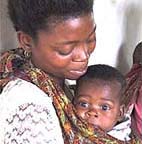|
||||

Credits and Copyright
|
|
|
|
Fourth GAVI Board Meeting, Noordwijk, The Netherlands, 19 November 2000 Task Force on Research and Development: terms of reference and composition Dr Peter Wilson, consultant to the Task Force on Research and Development (R&D), presented a summary (Word – 438k) of the composition, objectives, strategies and goals of the task force. The Board: 3.1 Approved the composition of the R&D Task Force which assures a range of expertise in vaccinology and immunology, provided that the recommendation in para. 3.4 below is addressed. The task force comprises:
3.2 Endorsed the advisory role that the task force will play in the process of identifying and supporting the GAVI research and development agenda. The task force will:
3.3 Approved the recommendation of the task force that GAVI should focus initially on three vaccine products: pneumococcal, rotavirus and meningococcal A (or A/C). These products, described in the presentation (Powerpoint – 113k), were picked from a larger list because they satisfied all or most of the following criteria:
3.4 Endorsed the proposal outlined in the presentation that the task force, in consultation with the GAVI Working Group and others in the research community, would seek to identify up to three promising fields of research on new technologies and systems for improving immunization services. Similar criteria as those used for vaccine product selection would be used to identify the under-addressed research fields, which may include:
3.5 Recognized that the current composition of the task force does not include experts in the area of applied and operational research, and encouraged the task force to add two to four appropriately qualified individuals to support this research area. 3.6 Requested the task force to provide the Board with its recommendations on candidate projects to support immunization services, at the latest by the Board’s next meeting in June 2001.
|
|
|
Contact GAVI | Guestbook | Text version | Credits and Copyright |
|
